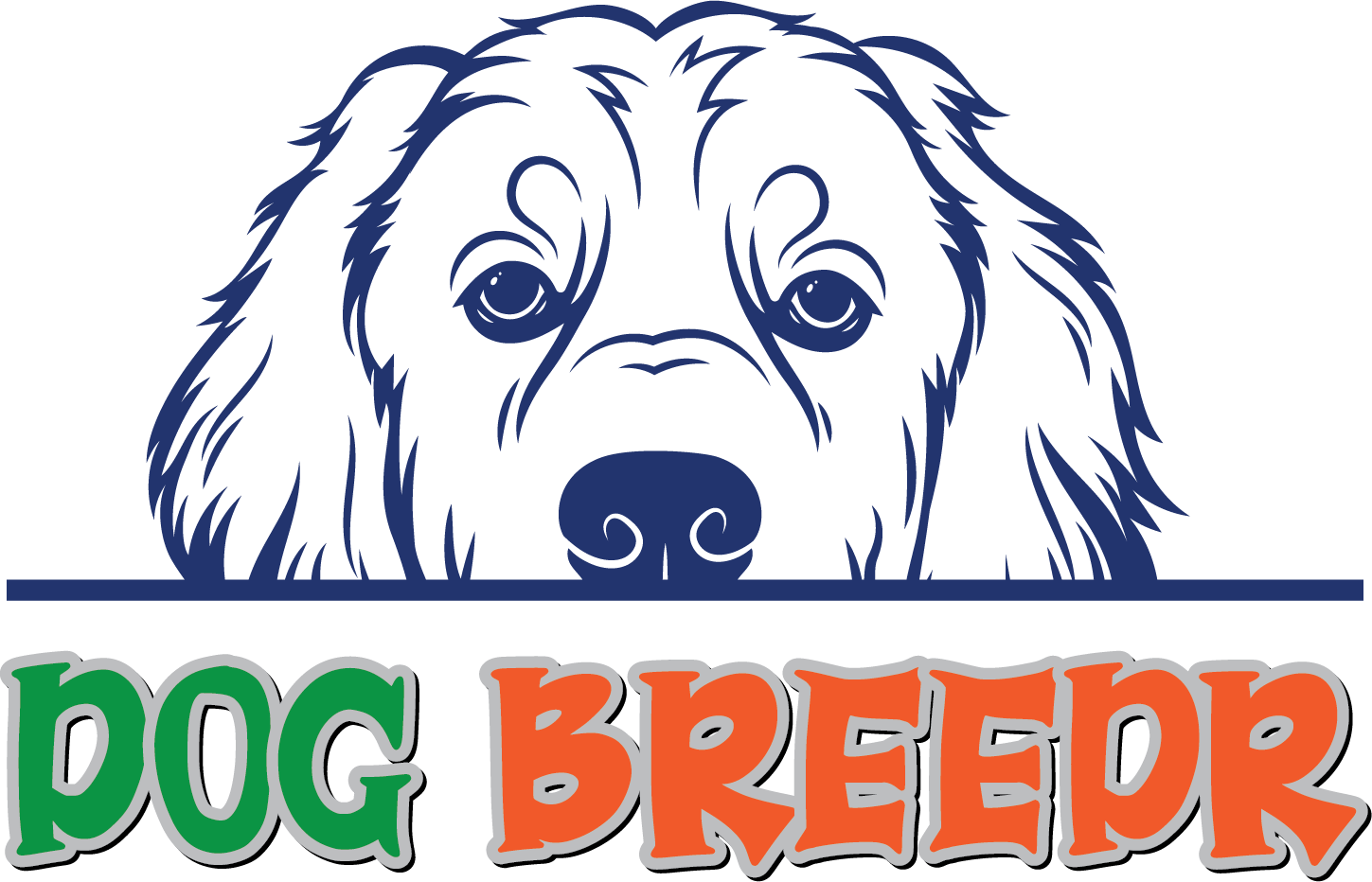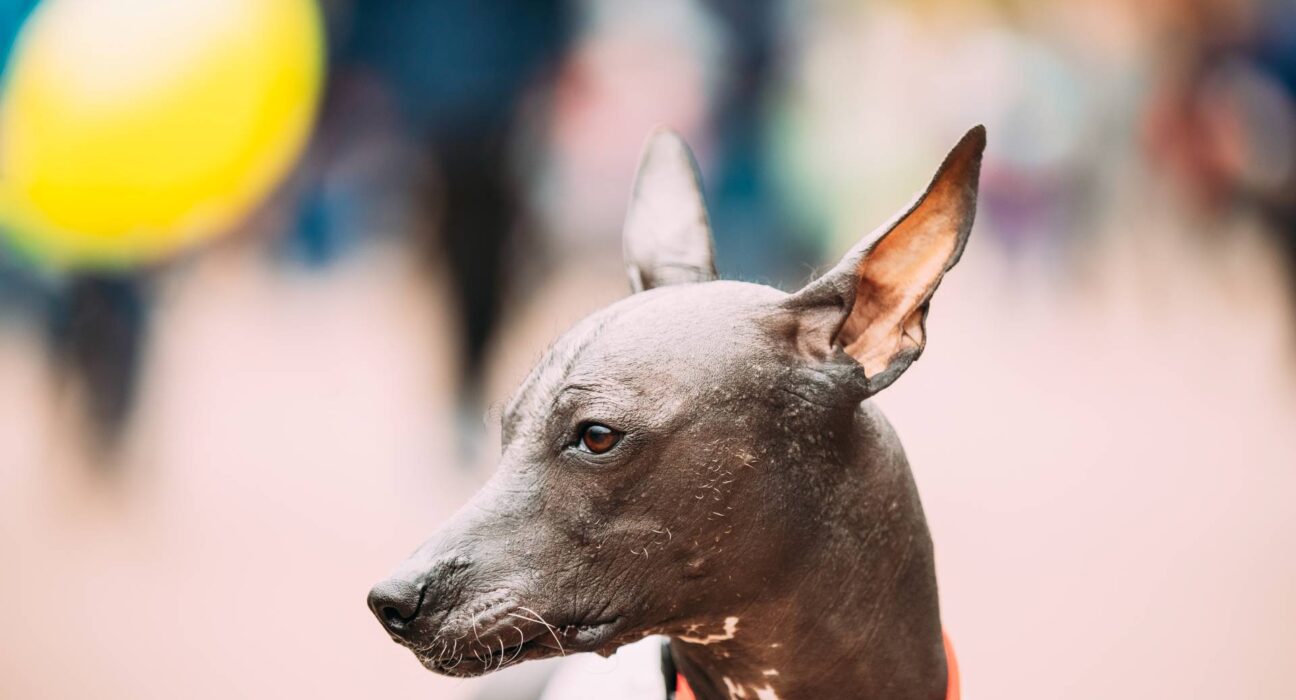The Xoloitzcuintli is an ancient Mexican breed of dog. It is also known as the Mexican Hairless Dog and is considered one of the oldest breeds.
They have been found in archaeological sites dating back to pre-Columbian times, suggesting they were around even before Aztecs adopted them.
Xoloitzcuintli’s are unique-looking canines with no coat, wrinkly skin, and protruding teeth that give them a distinctively endearing appearance.
Despite their small size, these dogs possess great strength and confidence. They are loyal companions and make excellent guard dogs due to their alertness and protective nature.
In addition to being intelligent, trainable, and devoted pets, the Xoloitzcuintli also makes an excellent therapy dog.
Xoloitzcuintli Physical Characteristics
The Xoloitzcuintli is a small to medium-sized breed, ranging in size from the toy (10-15 lbs), miniature (15-30 lbs), and standard (30-55 lbs).
They are characterized by their lack of fur, though some can have short coats. Their skin ranges from black to slate grey and can be lightly covered with short hairs.
This breed has large ears that stand erect and almond-shaped eyes that set off the wrinkled facial expression typical of this breed. The Xoloitzcuintli also possess a long tail that tapers to a point.
Xoloitzcuintli Personality
The curious Xoloitzcuintli is an alert, intelligent and devoted pet. They are loyal to their owners and make beautiful watchdogs thanks to their alertness and protective nature.
These dogs are highly trainable and eager to please, making them a perfect companion for any active family.
While they may be wary of strangers initially, the Xoloitzcuintli love and bond quickly with those they know well. They thrive when given lots of love and attention from their owners.
How To Take Care Of A Xoloitzcuintli
The Xoloitzcuintli, or Mexican Hairless Dog, is a unique and ancient breed that has been around for centuries. They make lovely pets and can be a great addition to any family.
However, it’s essential to understand the breed’s needs to ensure that your Xoloitzcuintli is kept healthy and happy. Here are some tips on how to take care of a Xoloitzcuintli:
- Diet: A high-quality diet is essential for your Xoloitzcuintli’s health and well-being, so you should feed them with specially formulated food for their breed.
Your veterinarian can help you choose the best food for your dog. Feeding them the right amount of food at the correct times is also essential, ensuring they get the proper nutrition.
- Grooming: Xoloitzcuintli have no fur, so they can be prone to skin problems if not properly groomed. Regular baths with a mild shampoo and brushing their coat with a soft brush will help keep their skin healthy and free of parasites. Trimming their nails when needed is also essential for their comfort and safety.
- Exercise: Like any other breed, the Xoloitzcuintli needs plenty of exercises to stay fit and healthy. An hour or two of daily exercise is optimal for them, including anything from going on walks, playing fetch, and even swimming.
- Training: Xoloitzcuintli are intelligent dogs easily trained with the right amount of patience and consistency.
Positive reinforcement works best when training them, so reward good behaviour with treats and plenty of praise.
- Socialization: Xoloitzcuintli should be socialized early to interact appropriately with other animals and people.
Introducing them to new people and environments gradually will help them become well-rounded pets that can easily adjust to different situations.
By understanding a Xoloitzcuintli’s needs and following these tips, you can ensure that your pet is kept healthy and happy. With proper care, your Xoloitzcuintli can be an excellent and loyal companion for many years.
Xoloitzcuintli Training And Obedience
Xoloitzcuintli Training and obedience are essential components to having a well-behaved, happy pup. While they can be independent and stubborn, Xolos respond very well to consistent training and positive reinforcement.
This breed is brilliant, and with the right motivation, you can help them reach their full potential in obedience training.
The first step to successful training for your Xolo is properly socializing them from a young age. This means introducing them safely to other animals, people, environments, and experiences so that they become comfortable with different situations without showing fear or aggression.
Proper socialization will also make teaching basic commands such as “sit” or “stay” much easier because it teaches your pup to respond to you and pay attention when given commands.
It is also essential to be patient with your Xolo during training. They can be stubborn and persistent, so it is best to set clear rules and expectations that they understand.
Use positive reinforcement such as treats or praise when they obey a command correctly; this will help them associate the desired behaviour with something rewarding.
Xolos are susceptible breeds, so consistency and repetition are key when teaching them new behaviours or commands.
They learn best through short sessions several times a day rather than longer ones once a day; this helps keep their focus and ensure that what has been learned is remembered quickly.
Once basic obedience has been mastered, you can move on to trick-teaching and more advanced training.
Xolos are brilliant and have a lot of potential for learning new things, so be creative when teaching them different commands.
Lastly, it is essential to remember that all dogs will respond differently to training and need individualized attention to succeed. With patience, consistency, and positive reinforcement, your Xoloitzcuintli can become an obedient pup that loves learning new things.
Common Health Problems In Xoloitzcuintlis
Xoloitzcuintli’s, commonly known as the Mexican Hairless Dog, is a breed prone to certain illnesses and health problems.
Some of the most common issues in Xolos include joint pain, arthritis, blindness, deafness, and heart murmurs.
· Joint Pain
Joint pain is one of the more frequent ailments suffered by Xolos. This condition is usually caused by age-related degeneration or injury to a joint.
Symptoms may include difficulty walking and reluctance to exercise due to muscle stiffness and soreness.
Treatment for joint pain often involves medications that reduce inflammation and increase mobility. Veterinary care should also be sought out if these treatments are ineffective.
· Arthritis
Arthritis is another common issue in Xolos. This condition is caused by a breakdown of the cartilage in the joints, leading to pain and stiffness.
Treatment for arthritis can involve physical therapy, medications such as anti-inflammatories and joint protectors, nutritional supplements, and even acupuncture or massage therapy.
· Blindness And Deafness
Blindness and deafness are also seen in Xolos due to congenital issues or age-related problems. Unfortunately, these conditions cannot be cured.
Still, they can be managed with special care measures that include appropriate positioning during activities, creating safe environments inside and outside the home, and using assistive devices such as hearing aids or mobility harnesses.
· Heart Murmurs
Heart murmurs are another health issue that can develop in Xolos. Symptoms typically caused by abnormalities in the heart’s structure include shortness of breath and fatigue.
Treatment for this condition often requires medications such as diuretics and ACE inhibitors to manage fluid build-up in the lungs and reduce stress on the heart.
Conclusion
Xoloitzcuintli is a unique and loyal breed of dog that can make excellent companions. However, they can also be prone to certain illnesses and health problems.
Owners must stay informed about common issues such as joint pain, arthritis, blindness and deafness, and heart murmurs so that prompt treatment can be sought if necessary.
Additionally, Xolos need patience and consistency in training to ensure success. With proper care, your Xoloitzcuintli will become the most loving pup you could ask for.

